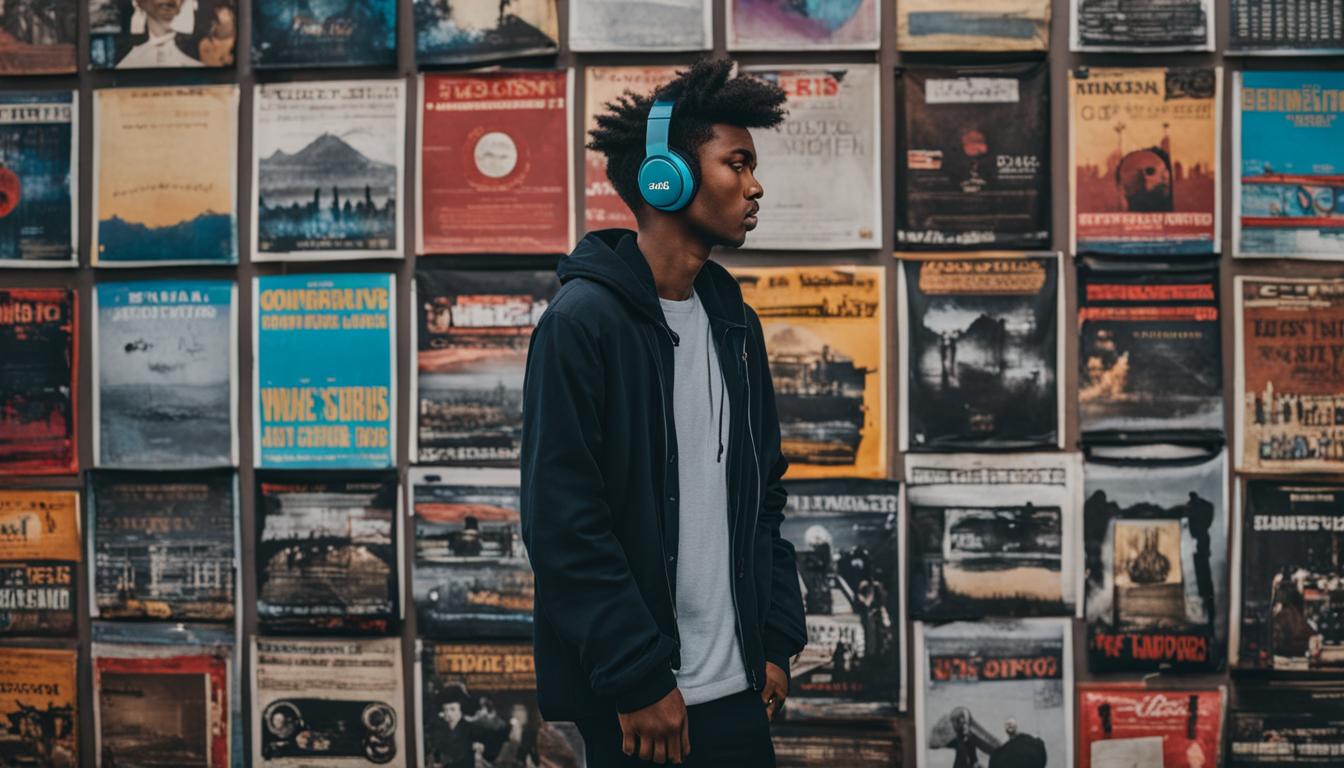Welcome to a world of musical exploration as we dive into the diverse and captivating realm of alternative music. From indie rock to experimental sounds, alternative music offers a wide range of genres that push the boundaries of mainstream conventions. Whether you’re a fan of underground music or looking to discover something new, this article will take you on a journey through the ever-evolving landscape of alternative music.
Key Takeaways:
- Alternative music offers a diverse range of genres and subgenres.
- Indie music, underground music, and experimental music are all part of the alternative music scene.
- Genres like alternative rock, alternative pop, and indie rock are popular within the alternative music community.
- Alternative music allows for creative expression and offers a platform for non-mainstream artists.
- Exploring alternative music can lead to the discovery of unique and innovative sounds.
The Evolution of Alternative Music
Alternative music has come a long way since its origins in the 1990s. Stemming from independently recorded music that gained commercial success, alternative music has become a diverse and influential genre. It encompasses a wide range of sub-genres, including alternative rock, indie rock, Britpop, and gothic rock.
The evolution of alternative music can be traced back to its connection with 1970s punk. This rebellious and non-conformist movement laid the groundwork for alternative rock and its independent nature. Independent record labels played a significant role in the development of alternative music, providing a platform for musicians who didn’t align with major labels. These labels allowed artists to explore unconventional sounds, pushing the boundaries of mainstream conventions.
The late 1980s witnessed the emergence of distinct styles within alternative rock, such as indie rock and grunge. Bands like Nirvana broke through to the mainstream in the 1990s, bringing alternative rock to a wider audience. The popularity of grunge and Britpop movements further solidified alternative music’s place in the mainstream. Today, alternative music continues to evolve, with new artists and sub-genres pushing the boundaries of creativity and innovation.
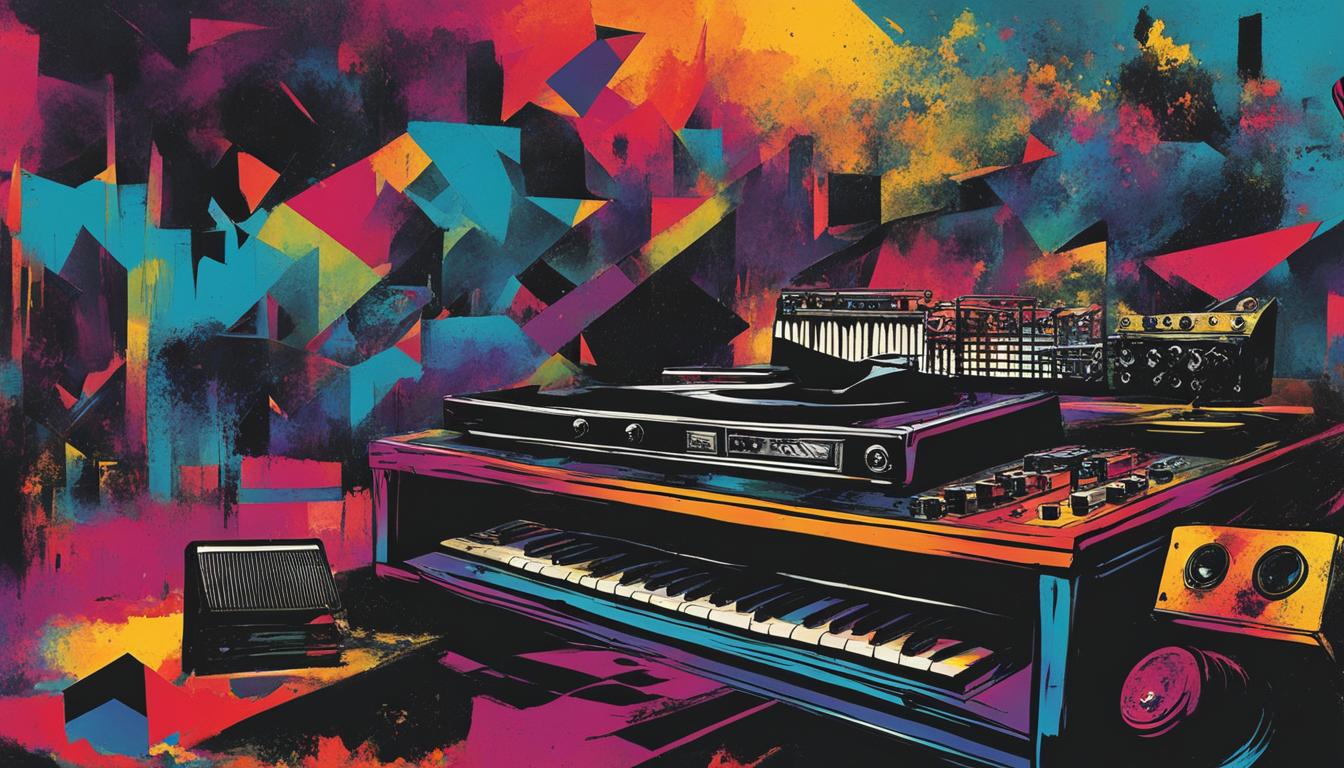
The Influence of Independent Record Labels
Independent record labels played a crucial role in the evolution of alternative music. These labels provided a platform for artists who didn’t fit the mold of major labels. They allowed musicians to explore new sounds and styles, creating a space for alternative music to flourish. Without the support of independent record labels, many iconic alternative artists may have gone unnoticed.
Diversity within Alternative Music
One of the defining characteristics of alternative music is its diversity. The genre encompasses a wide range of styles, from the raw energy of punk to the introspective nature of indie rock. Within alternative rock, sub-genres like gothic rock and Britpop offer unique sounds and aesthetics. This diversity allows listeners to explore different facets of alternative music and find their own connections within the genre.
The Continuing Evolution of Alternative Music
Alternative music is an ever-evolving genre that continues to push boundaries and challenge expectations. Today, artists are blending elements of alternative rock with other genres, creating a fusion of sounds that defy categorization. The influence of alternative music can be seen in mainstream pop, rock, and even hip-hop. As artists experiment with new sounds and styles, the future of alternative music remains wide open, promising exciting and innovative music for years to come.
The History of Alternative Music
Alternative music experienced a surge in popularity throughout the 1990s, with rock becoming one of the most commonly listened to genres. Indie music, which has a softer sound than earlier alternative music, gained significant popularity with bands like Modest Mouse and The Kooks. While the meaning of “alternative” has shifted in the 21st century, alternative music remains a prominent genre, with many bands relying on the internet to reach their audience. Music festivals like Glastonbury provide a platform for alternative, indie, and rock artists, allowing new bands to be discovered.
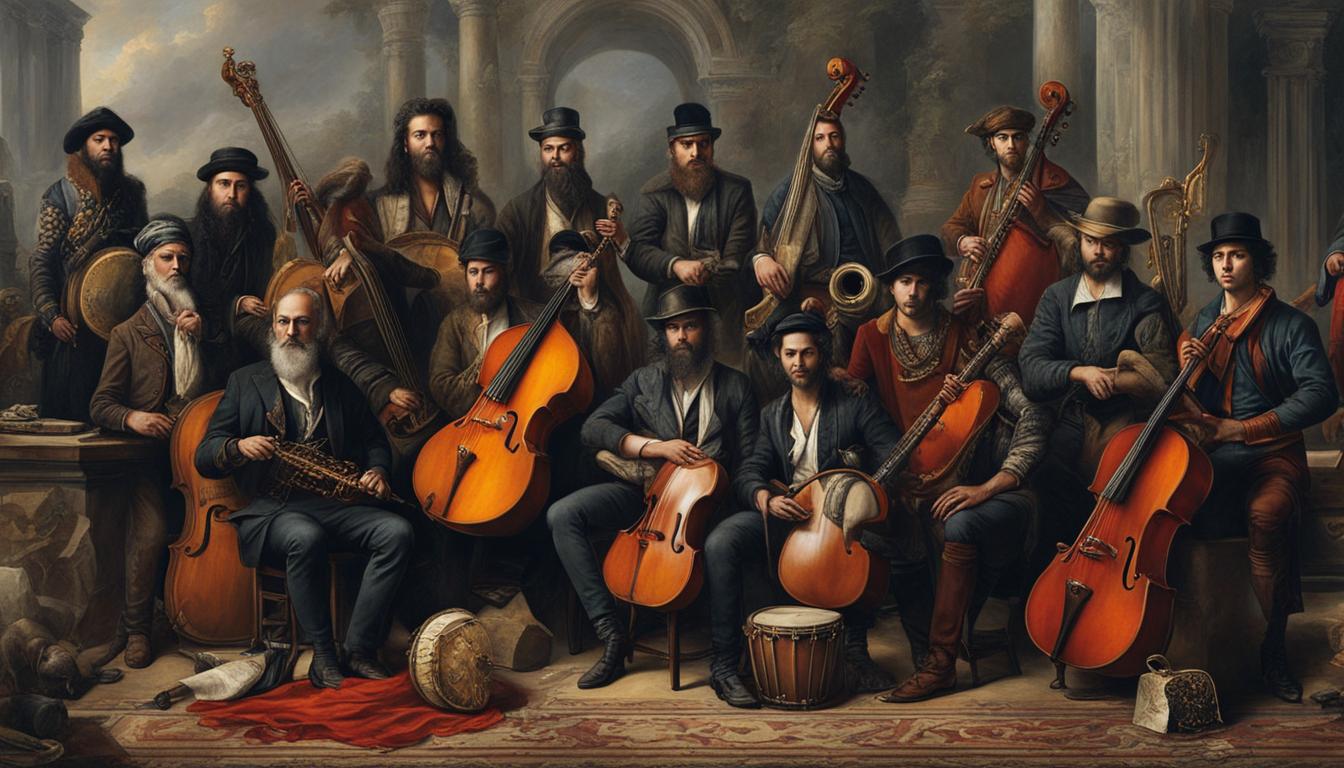
The Rise of Indie Music
During the 1990s, indie music emerged as a subgenre within the alternative music scene. Bands like Modest Mouse and The Kooks gained popularity with their unique sound and independent approach to music production. Indie music, with its softer and more melodic sound, appealed to a wide audience and became a defining sound of the decade.
“The indie music scene of the 1990s brought a fresh and unique sound to the alternative music landscape. Bands like Modest Mouse and The Kooks captivated audiences with their heartfelt lyrics and catchy melodies.”
The Role of Music Festivals
Music festivals like Glastonbury played a crucial role in showcasing alternative, indie, and rock artists during the 1990s. These festivals provided a platform for new and emerging bands to be discovered by a wider audience. The live performances at music festivals allowed artists to connect with fans on a deeper level, creating a sense of community within the alternative music scene.
- Glastonbury and other music festivals became synonymous with alternative music in the 1990s.
- Indie, alternative, and rock bands were able to showcase their talent to a larger audience.
- Music festivals fostered a sense of camaraderie and community within the alternative music scene.
The Vibrant Alternative Music Scene
The alternative music scene is a rich and vibrant community that has its roots in the punk and indie movements of the past. It has since evolved into a diverse and influential genre, encompassing various subgenres such as grunge, shoegaze, Britpop, and post-rock.
One of the key factors that sets the alternative music scene apart is its history of rebellion and non-conformity. From the early days of punk to the independent spirit of indie music, the scene has always challenged mainstream norms and pushed boundaries.
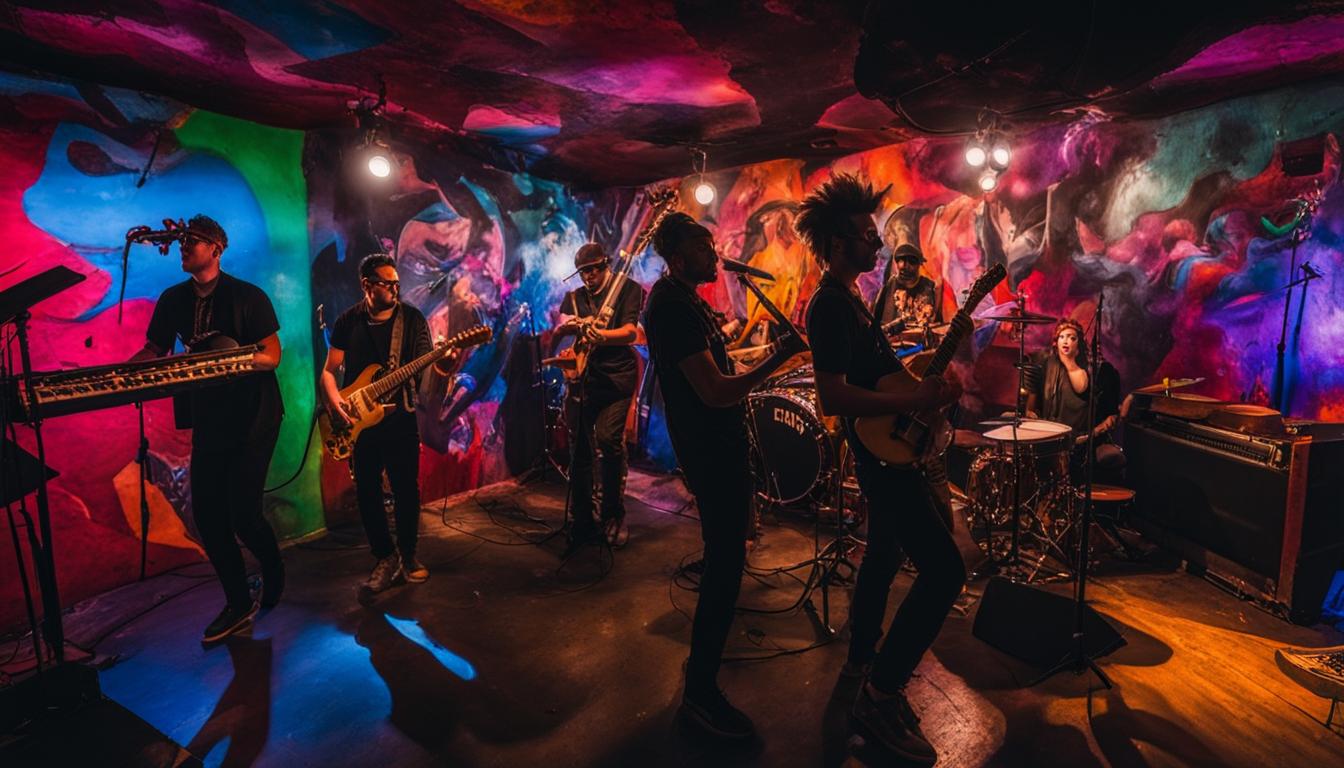
The Evolution of Subgenres
Throughout its history, alternative music has continually evolved and given rise to new subgenres, each with its own unique sound and style. From the raw energy of punk to the dreamy shoegaze movement, alternative music has something for every taste.
“Alternative music is a playground for innovation and experimentation. It’s a place where artists can push the boundaries and create something truly unique.”
Key players in the alternative music scene have left a lasting impact on the genre, with influential bands like Radiohead, The Smiths, Björk, and Arcade Fire. Their music has inspired generations of artists and fans, shaping the landscape of alternative music as we know it today.
Embracing Creativity and Individuality
The alternative music scene celebrates creativity and individuality, allowing musicians to explore new sounds and ideas without the constraints of commercial interests. It’s a place where artists have the freedom to experiment, creating music that is both innovative and authentic.
- Alternative music scene origins
- Diversity of subgenres
- Influential key players
- Emphasis on creativity and individuality
Whether you’re a longtime fan or new to the alternative music scene, there is always something exciting waiting to be discovered. Its vibrant and ever-evolving nature ensures that alternative music continues to captivate audiences and inspire future generations of musicians.
Indie Music: A Fresh and Unique Sound
Indie music, stemming from the punk and new wave movements of the 1970s and 1980s, offers a fresh and unique sound that captivates listeners. With its origins rooted in creativity and innovation, indie music pushes the boundaries of mainstream conventions, resulting in a diverse range of artistic expressions.
Unlike music produced by major record labels, indie music is created by independent artists or labels, allowing for greater autonomy and experimentation. This independent approach fosters a sense of authenticity, attracting those who seek music that goes beyond commercial interests.
Indie music is characterized by its ability to blend various genres and influences, resulting in a sound that is both familiar and distinct. From introspective singer-songwriters to energetic and experimental bands, indie music offers a wide range of styles and moods for listeners to explore.

The Impact of Punk and New Wave Movements
“Punk and new wave movements of the 1970s and 1980s laid the foundation for indie music. These movements emphasized individuality, creativity, and a rejection of mainstream commercialism. Indie music carries on these principles, providing a platform for artists to express their unique voices.”
Indie music continues to evolve and adapt, drawing inspiration from various musical traditions while maintaining its rebellious spirit. With its emphasis on creativity, innovation, and a fresh approach, indie music remains a vibrant and influential force in the music industry.
Indie Pop: Catchy and Relatable
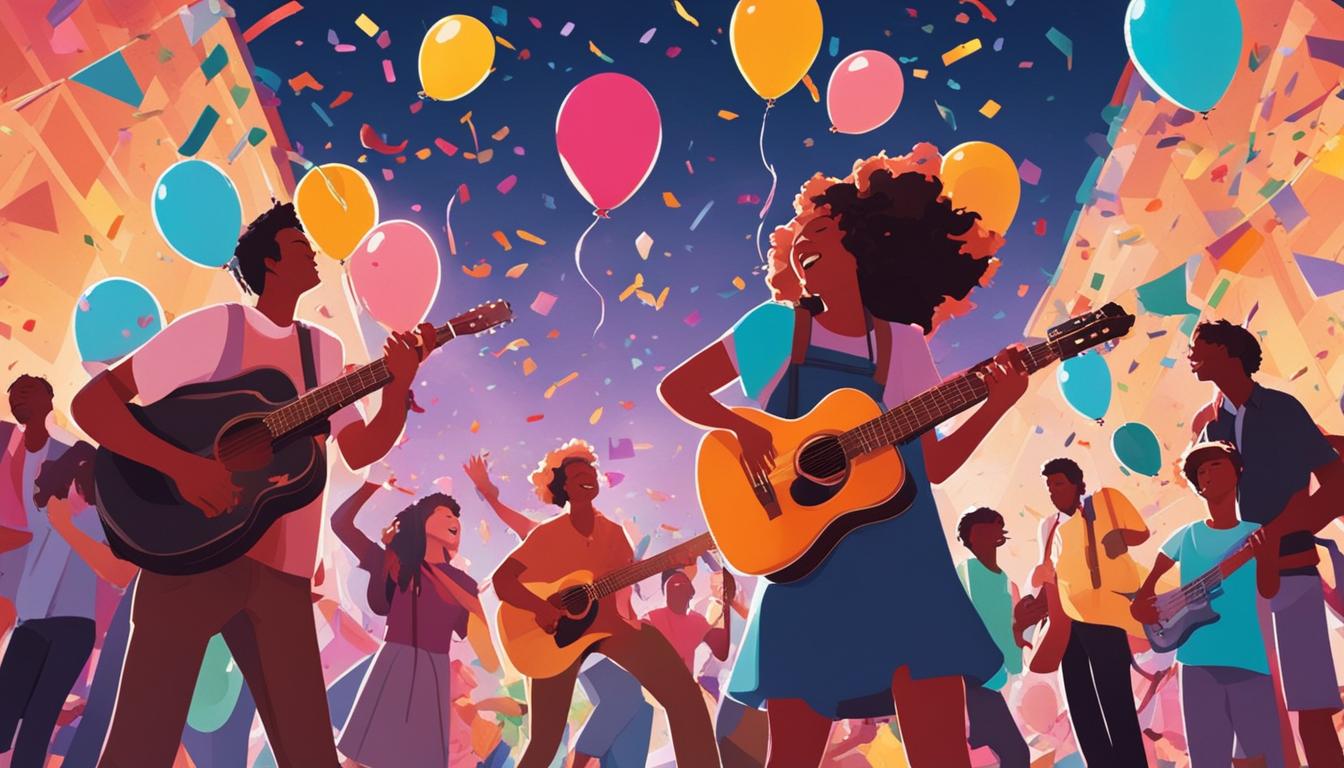
Indie pop is a vibrant subgenre of indie music that captivates listeners with its upbeat melodies, catchy hooks, and relatable lyrics. With its infectious and joyful sound, indie pop has become a favorite among younger audiences and has gained popularity in recent years. It combines elements of indie rock and pop music, creating a unique blend that appeals to a wide range of listeners.
What sets indie pop apart is its ability to explore themes of love, relationships, and youth in a way that feels relatable and authentic. The lyrics often touch on the ups and downs of romantic experiences, the complexities of human connection, and the emotions that come with being young and navigating the world. This relatability resonates with listeners and creates a strong emotional connection.
In addition to its relatable lyrics, indie pop is known for its catchy and infectious melodies. The genre is characterized by its ability to create hooks that get stuck in your head and make you want to sing along. The upbeat and energetic nature of indie pop makes it perfect for dancing, singing in the car, or simply lifting your spirits.
Indie Pop: A Subgenre with Endless Possibilities
Indie pop is a subgenre that offers endless possibilities for artists to experiment and innovate. It allows musicians to blend different musical styles and influences, resulting in a fresh and unique sound. Artists like Vampire Weekend, MGMT, and Tegan and Sara have taken indie pop to new heights, pushing the boundaries of the genre and infusing it with their own creative vision.
With its catchy melodies, relatable lyrics, and youthful energy, indie pop continues to captivate audiences and expand its reach. Whether you’re dancing to the infectious beats or finding solace in the heartfelt lyrics, indie pop offers a refreshing and enjoyable listening experience that speaks to the universal human experience.
Indie Folk: Emotionally Captivating
Indie folk is a captivating subgenre within the realm of indie music. With its simple melodies and the incorporation of stringed instruments like the guitar and banjo, indie folk has a distinct and heartfelt sound. The genre’s emphasis on personal and poetic lyrics explores themes of love, relationships, and introspection, resonating deeply with listeners.
Indie folk artists have a unique ability to capture raw emotions through their music. Their heartfelt songs offer a sense of vulnerability and honesty that allows listeners to connect on a profound level. Whether it’s the gentle strumming of an acoustic guitar or the melancholic melodies of a banjo, indie folk creates an intimate atmosphere that invites introspection and emotional exploration.
The beauty of indie folk lies in its ability to transport listeners to a world of heartfelt storytelling and emotional landscapes. With its stripped-down instrumentation and honest lyrics, the genre provides a raw and authentic experience. It’s no wonder that indie folk continues to captivate audiences with its tender melodies and lyrical depth.
The Essence of Indie Folk
- Simple melodies that evoke a sense of nostalgia
- Intimate and heartfelt lyrics that explore themes of love, relationships, and self-reflection
- Incorporation of stringed instruments like the guitar and banjo to create a warm and organic sound
- A focus on storytelling and creating emotional connections with listeners
Indie folk is a genre that invites listeners to slow down, reflect, and embrace their emotions. It’s a musical journey that captures the essence of the human experience and reminds us of the power of vulnerability. Whether you’re drawn to the simple melodies, the poetic lyrics, or the emotional depth, indie folk offers an escape into a world of heartfelt storytelling and introspection.
Understanding the Meaning of Indie Music
Indie music, short for independent music, is a genre that refers to music produced without the assistance of major commercial record labels. It emerged in the punk and post-punk scenes of the 1970s and 1980s and was characterized by a DIY ethos and a rejection of mainstream industry restrictions. Today, indie music covers a wide range of genres and maintains its rebellious and non-conformist roots.
What sets indie music apart is its independent nature, allowing artists to have complete creative control over their music. It is a platform for self-expression, where musicians can explore unique sounds, experiment with different styles, and push the boundaries of mainstream conventions. This freedom from commercial interests often results in music that is authentic, original, and diverse.
Indie music has its own vibrant and supportive community, both for artists and fans. It fosters a sense of connection and camaraderie, as musicians and listeners come together to appreciate and celebrate music that goes beyond the mainstream. This sense of community is further enhanced by the accessibility of indie music, with many independent artists leveraging the power of the internet to reach their audience.
The Appeal of Indie Music
Indie music has an undeniable appeal that sets it apart from the mainstream. One of the key factors contributing to its popularity is its authenticity. Independent artists have the freedom to create music that is true to their own artistic vision, without the pressure to conform to commercial interests. This authenticity shines through in the lyrics, melodies, and overall sound of indie music, giving it a raw and genuine quality that resonates with listeners.
Another aspect that attracts people to indie music is its originality. As a genre that thrives on creativity and innovation, indie music constantly pushes boundaries and explores new sonic landscapes. Artists are not afraid to take risks and experiment with unconventional sounds, resulting in music that feels fresh and exciting. This originality offers a welcome escape from the predictability of mainstream music and provides a pathway for discovering unique and undiscovered talent.
“Indie music brings together a diverse range of artists and styles, making it a truly inclusive and dynamic form of expression. Whether it’s indie rock, indie pop, or indie folk, there is a sense of diversity and variety within the genre that appeals to a wide range of listeners. This rich tapestry of sounds and perspectives fosters a sense of community among indie music fans, creating a shared experience and connection that transcends geographical boundaries and cultural differences.”
Lastly, indie music fosters a sense of community and connection. The independent nature of the genre creates a space where artists and fans can come together and form meaningful relationships. Whether it’s attending concerts, participating in online communities, or supporting local independent record stores, indie music enthusiasts actively engage with the culture and contribute to its growth. This sense of community not only strengthens the bond between artists and their fans but also paves the way for new opportunities and collaborations.
In summary, indie music’s appeal lies in its authenticity, originality, diversity, and sense of community. By providing a platform for artists to express themselves freely and creating a space for listeners to discover fresh and unique sounds, indie music continues to captivate audiences around the world.
Overview of Alternative Music
Alternative music is a genre that defies convention and embraces experimentation. It offers a distinct sound and style that sets it apart from mainstream music. With its unconventional lyrics, unique melodies, and innovative arrangements, alternative music attracts listeners who crave something different. Whether it’s the raw intensity of grunge, the introspective melodies of indie rock, or the atmospheric sounds of shoegaze, alternative music encompasses a wide range of genres and subgenres that cater to diverse musical tastes.
The genre’s unconventional nature has allowed artists to push boundaries and explore new sonic territories. From the early days of punk, alternative music has embraced a DIY ethos, rejecting the norms of the mainstream industry. This independent spirit has paved the way for experimental sounds and ideas that challenge the status quo. Alternative music encourages artists to express themselves authentically and freely, resulting in a rich and vibrant landscape of musical innovation.
One of the defining characteristics of alternative music is its ability to evolve and adapt over time. From its underground roots to its gradual integration into the mainstream, the genre continues to evolve and redefine itself. What was once considered alternative may now be played on the radio and enjoyed by a wider audience. Despite these shifts, alternative music remains true to its unconventional and experimental roots, offering a refreshing alternative to the mainstream sound.
Key Points:
- Alternative music is a genre that defies convention and embraces experimentation.
- It offers a distinct sound and style that sets it apart from mainstream music.
- The genre encompasses a wide range of genres and subgenres, appealing to diverse musical tastes.
- Alternative music encourages artists to express themselves authentically and push boundaries.
- The genre continues to evolve and redefine itself while staying true to its unconventional and experimental roots.

Conclusion
Alternative music exploration opens up a world of diverse and ever-evolving genres and subgenres. From the raw power of grunge to the melodic sounds of indie rock and the hypnotic shoegaze, there is something for every music lover within the alternative music scene.
Rooted in rebellion and non-conformity, alternative music has always provided a platform for creativity and innovation. It challenges the norms and pushes the boundaries of what is considered mainstream. Whether you are a seasoned fan or just starting your alternative music journey, you can immerse yourself in the power of unconventional soundscapes and discover new artists who defy conventions.
As you delve into the vibrant world of alternative music, you will find a community that embraces authenticity, originality, and diversity. It is a place where artists are free to express themselves and connect with their fans on a deeper level. So, get ready to explore, discover, and let the unconventional sounds of alternative music take you on a journey of musical exploration like no other.
FAQ
What is alternative music?
Alternative music is a genre that emerged in the 1990s, encompassing various sub-genres such as grunge, indie rock, Britpop, and gothic rock. It is characterized by its connection to 1970s punk and its independent nature.
How did alternative music become popular?
Alternative rock entered the mainstream in the 1990s with the success of bands like Nirvana and the popularity of the grunge and Britpop movements.
What is indie music?
Indie music is a subgenre of alternative music that is produced by independent artists or labels without the support of major record labels. It is known for its creativity and innovation.
What is indie pop?
Indie pop is a subgenre of indie music characterized by its upbeat melodies, catchy hooks, and relatable lyrics. It explores themes of love, relationships, and youth.
What is indie folk?
Indie folk is a subgenre of indie music rooted in traditional folk music. It features simple melodies and often incorporates stringed instruments like the guitar and banjo. Lyrics in indie folk songs tend to be personal and poetic, exploring themes of love, relationships, and introspection.
What does indie music mean?
Indie music, short for independent music, refers to music produced without the assistance of major commercial record labels. It originated in the punk and post-punk scenes of the 1970s and 1980s and maintains its rebellious and non-conformist roots.
Why is indie music appealing?
Indie music appeals to many because of its authenticity, originality, and diversity. It allows artists to express themselves freely, creating a sense of community and a strong connection between fans and artists.
What is the meaning of alternative music?
Alternative music encompasses a wide range of genres that are not considered mainstream. It is known for its unconventional and experimental sounds, lyrics, and styles.
What is the alternative music scene like?
The alternative music scene is a diverse and ever-evolving landscape of genres and subgenres. From grunge to indie rock to shoegaze, there is something for everyone within this scene. It offers a platform for creativity and innovation, attracting artists and fans who crave unique and innovative sounds.
What are some key players in the alternative music scene?
Some key players in the alternative music scene include Radiohead, The Smiths, Björk, and Arcade Fire. These artists have made significant contributions to the genre and have influenced its development over the years.

